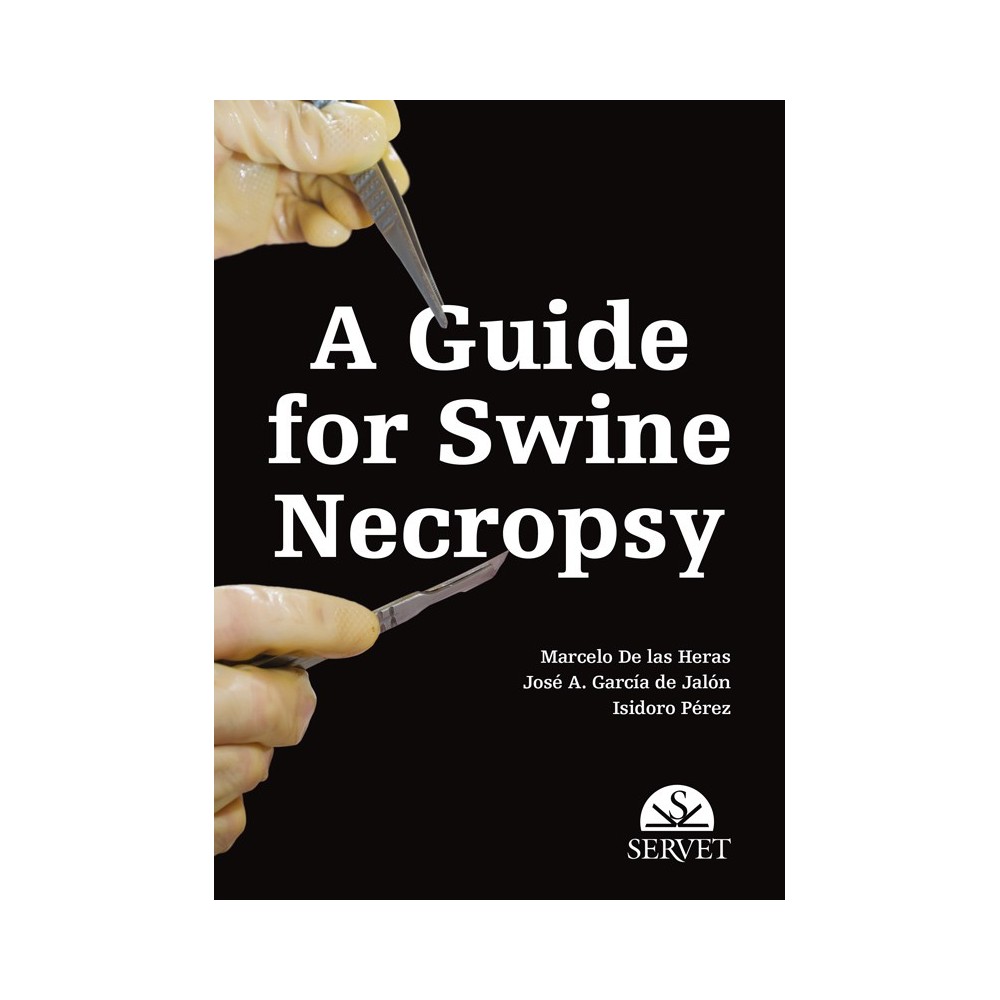
Atlas of Ovine Pathology
This atlas compiles clinical cases and images of pathological conditions. It will be very helpful for any vet needing to recognise macroscopical and microscopical lesions in sheep.



This book offers essential information about how to obtain samples for routine clinical and pathological investigations veterinarians habitually follow in pig farms. In addition, a complete and easy-to-perform necropsy procedure is shown. Picture galleries illustrate these procedures in a very easy way to follow. The guide also contains a set of pictures representing the main pathologies veterinarians can find in their practice. The guide is very visual and literature is reduced in order to facilitate the use of the book. This design, together with the book format and binding makes this guide very easy to use in practice by veterinarians and farm workers.
This book offers essential information about how to obtain samples for routine clinical and pathological investigations veterinarians habitually follow in pig farms. In addition, a complete and easy-to-perform necropsy procedure is shown. Picture galleries illustrate these procedures in a very easy way to follow. The guide also contains a set of pictures representing the main pathologies veterinarians can find in their practice. The guide is very visual and literature is reduced in order to facilitate the use of the book. This design, together with the book format and binding makes this guide very easy to use in practice by veterinarians and farm workers.
Presentation of the book
The guide is presented in a very handy binding allowing to be used under pig farm conditions. The book is distributed in three parts. First part is dedicated to clinical sampling and is completed with clinical pictures of the main clinical signs of common diseases. Second part describes how to perform a necropsy in a very quick and easy way. Necropsy procedure is splitted in 5 steps and, as a complement, a how to get best samples from histology and microbiology is shown. The last chapter includes a picture collection of common diseases of pigs which readers can use for comparison.
Authors
Marcelo de las Heras
Dr. Marcelo de las Heras graduated in Veterinary Medicine in 1981 and obtained his PhD in 1987. He has been teaching veterinary pathology since 1983 at the University of Zaragoza and currently is a professor of veterinary pathology. He has been the author of several books of necropsy techniques and anatomic pathology in sheep, goats and pigs and published more than 100 papers on scientific journals.
José Antonio García de Jalón
Dr. José A. García de Jalón graduated in Veterinary Medicine in 1979 and obtained his PhD in 1986. He has been teaching veterinary pathology since 1979 in the University of Zaragoza and currently is a professor of veterinary pathology. He has been the author of several books of necropsy techniques and anatomic pathology in sheep, goats and pigs and published more than 110 papers on scientific journals.
Isidoro Pérez Guzmán
Dr. Pérez graduated from the Veterinary Medical School at the University of Zaragoza in 1987. He completed his veterinary studies with a master’s degree in swine production at The Autonomous University of Barcelona (UAB) in 1995 and an advanced studies diploma (DEA) in milk production of sows in 2006. He developed his professional experience at the swine technical services of Cooper Zeltia, Pitman-Moore, Mallinkrodt Pharmaceuticals and Schering-Plough until 2006, and afterwards he became the production manager at Grupo Obanos until present.
Table of Contents
1. Introduction
2. Identification of clinical signs
3. Picture gallery of pig diseases
4. Sampling for clinical procedures
5. Necropsy step by step
6. Sampling for histopathology studies
Ficha técnica
Referencias específicas
This atlas compiles clinical cases and images of pathological conditions. It will be very helpful for any vet needing to recognise macroscopical and microscopical lesions in sheep.
The most updated information on avian influenza with a practical approach. The authors review the aetiology, clinical signs, diagnosis, and control of avian influenza viruses. It also includes numerous graphic resources to make the contents more understandable to readers.
This guide is a visual and practical explanation of what should happen from the moment when you receive the semen from the artificial insemination centre, until the moment when the sow is inseminated, with a focus on the use of refrigerated semen: conservation and management of seminal doses, oestrus detection, identification of the best time for insemination, insemination methods, and hormonal control of oestrus and ovulation.
Handy and rigorous book focused on the main viral infections in poultry farming through a practical and visual approach of the topic. Each disease has been thoroughly reviewed including the most updated information (aetiology, epidemiology, clinical signs, etc.) to facilitate its comprehension by the readers.
Because the prolificacy of sows can now be very high, piglets require special attention to ensure their survival. This book describes the importance of colostrum and its immediate ingestión after farrowing. The energy, immunity,and growth factors contained within make colostrum feeding essential for the optimal development of newborn piglets.